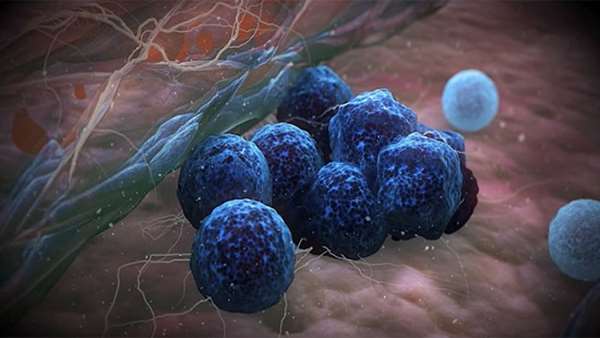Potential of 3-D nanoenvironments for experimental cancer research
Researchers at Okayama University employed a 3-D nano-matrix to gain insights into how different cells types mimic the properties of cancer stem cells in this environment. Their results published in the journal PLOS Oneshow that a nano-environment promotes distinct patterns of cell aggregation and biological properties that are reminiscent of tumors.
Researchers at Okayama University employed a 3-D nano-matrix to gain insights into how different cells types mimic the properties of cancer stem cells in this environment. Their results published in the journal PLOS Oneshow that a nano-environment promotes distinct patterns of cell aggregation and biological properties that are reminiscent of tumors.
In biological experiments cells are usually grown on a two-dimensional matrices. Although cells stick well to such surfaces, this process of adhesion can sometimes mask the natural biological properties of cells. So there is demand for alternatives to 2-D matrix environments to cultivate and study cancer cells. Nanoculture plates (NCPs) are specialized nano-scale matrices resembling the scaffolding on a building. NCPs give cells space to migrate freely without adhering to the bottom and aggregation with each other; all of these properties are essential for tumors.
Dr. Takanori Eguchi and colleagues at Okayama University adopted these favorable properties of NCPs to study 67 biological cell lines, focusing on the range of cells that could successfully transform into cancerous cells. A remarkable feature of cancer cells is their ability to grow in the body even under conditions of low oxygen. Under these conditions, cancer cells tend to start showing properties of stem cells, thus forming cancer stem cells (CSC). The milieu inside cell aggregates can also result in oxygen deprivation. The authors were thus also interested in seeing if CSCs could be induced in NCPs. To sustain the induction of "stemness," a growth medium containing enhanced nutrients was used, termed a stem cell inducing medium.
The researchers observed that while most of the cell lines formed spheroids characteristic of tumor cells, a novel pattern of grape-like aggregation (GLA) was also prominent in some cases. To further characterize GLA-forming cells, cells known as PC-3 cells were grown on NCPs and then injected into mice. Not only did PC-3 GLAs enlarge into tumors, but they also rapidly migrated to other organs just like cancer cells, while the spheroids did not show such behavior. The presence of the stem cell inducing medium in NCPs further favored the formation of larger aggregates of PC-3 cells, with very strong intercellular adhesion forces, reminiscent of CSCs.
CSCs have an unusual genetic profile, comprising stem cell genes and cancer cell genes. Incubation of PC-3 cells in NCPs resulted in induction of a high number of pluripotency or "stemness" inducing genes, along with some tumor inducing genes. CSCs also secret intracellular sacs called exosomes, which contain EpCAM- one of CSC proteins. By studying the extracellular fluid, the researchers found that exosome-free HSP90α was also abundantly released under these conditions.
In this study, NCPs were seen to be excellent matrices for replicating in-vitro tumor synthesis. The authors anticipate that, "These features of NCPs may be useful for advanced tumor and stem cell biology and preclinical testing of novel therapeutics."
Cancer stem cells: Stem cells are cells with the enhanced ability to evolve into any cell type. Cancer stem cells are thus cells found within tumors, with this ability. These cells are highly lethal because owing to their enhanced potential, they can lead to relapse of tumors.
Pluripotency: Ability of certain cells to change into any other cell type in the body, with distinct properties and functions. Stem cells are thus an example of cells having pluripotency.
Reference:http://journals.plos.org/plosone/article?id=10.1371/journal.pone.0191109





ارسال به دوستان